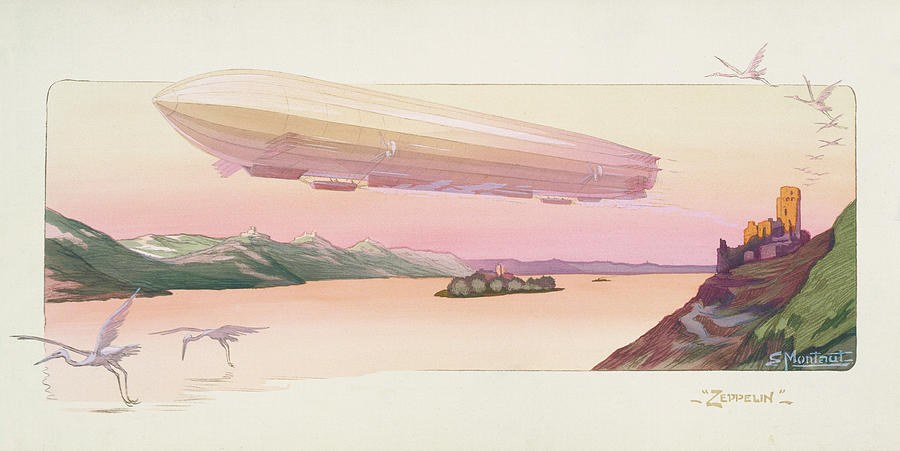Mecanic Art
On view September 2021 – September 2022

Mecanic Art is an international artistic movement which emerged in France in the late 19th century. Art from this movement illustrates the promise and evolution of industrialization, while emphasizing movement and speed. Ernest Montaut is considered the founder of Mecanic Art. He is known for speed lines and artistic techniques such as the distortion of perspective through foreshortening the image to depict speed and create the impression of movement. The artworks also portray glamour, fashion, and adventure. These examples highlight dirigibles as beacons of modern life.
Ernest Montaut died at the young age of 31. After his death, his wife Marguerite continued to produce lithographs. Occasionally signed as ‘M. Montaut,’ most of her prints used the name ‘Gamy,’ – ‘Gamy’ being an anagram of ‘Magy.’ Influenced by Ernest and Marguerite, George Bric and H.L. Roowy are other well-known lithographic artists of the period.
Pochoir Prints of Dirigibles
These prints featuring dirigibles, or airships, were all produced by a pochoir, or stencil, process in which the outlines for each image were drawn onto lithographic stones and printed. Using these uncolored prints as a template, elaborate stencils were cut for each color. Watercolor was then brushed onto the image through the stencil. The coloring process was complex, with each print taking several days to produce. The Gamy-Montaut studio employed a group of trained artists, which explains the noticeable differences in color between similar images.
Image credit: Ernest Montaut, "Zeppelin," c. 1915, Mabileau & Co., Paris, paper, ink, watercolor, AAAIBM, Soukup & Thomas Collection, PB2002.001.1266.
